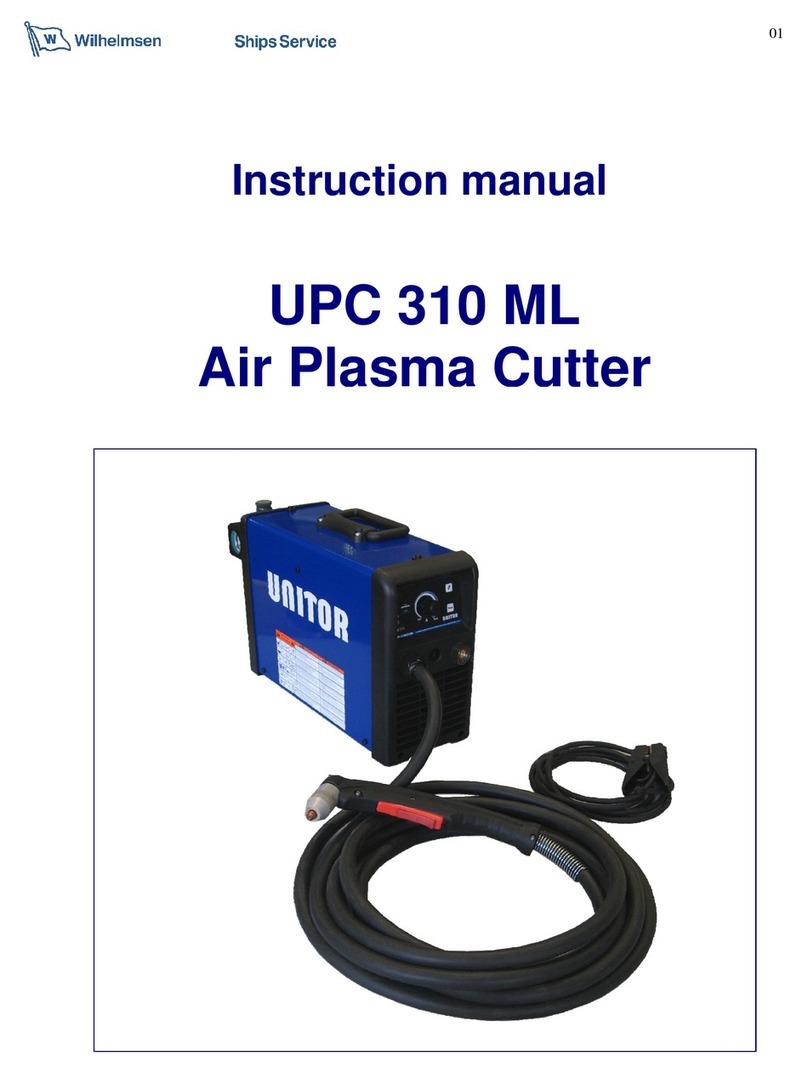
UWW-301 TP
Page 2 of 38 Revision: 1.0/June-/2020
TABLE OF CONTENTS
1 INTRODUCTION ..................................................................................................................................................................................... 3
2 INSTALLATION ...................................................................................................................................................................................... 3
2.1 CONNECTIONS TO THE MAINS POWER SUPPLY .............................................................................................................................. 3
2.2 FRONT PANEL........................................................................................................................................................................................ 4
2.3 REAR PANEL .......................................................................................................................................................................................... 4
2.4 PREPARING FOR MMA WELDING ........................................................................................................................................................ 4
2.5 PREPARING FOR TIG WELDING .......................................................................................................................................................... 6
2.6 PREPARING FOR MIG/MAG WELDING ................................................................................................................................................ 7
2.6.1 WIRE SPOOL POSITIONING.......................................................................................................................................................................................... 7
2.6.2 POSITIONING THE WIRE IN THE WIRE FEEDER ........................................................................................................................................................ 7
2.6.3 CONNECTIONS TO SOCKETS ...................................................................................................................................................................................... 8
3 COMMISSIONING ................................................................................................................................................................................... 9
3.1 USER INTERFACE ................................................................................................................................................................................. 9
3.2 UNIT POWER-UP.................................................................................................................................................................................. 11
3.3 RESET (LOAD FACTORY SETTINGS) ................................................................................................................................................ 11
3.4 GAS FLOW ADJUSTMENT IN MIG/MAG MODE ................................................................................................................................. 11
3.5 ALARM MANAGEMENT........................................................................................................................................................................ 12
4 WELDING SETTINGS ........................................................................................................................................................................... 13
4.1 TORCH TRIGGER MODES .................................................................................................................................................................. 13
4.2 SELECTION OF THE WELDING MODE AND TORCH TRIGGER PROCEDURE ............................................................................... 14
4.3 PARAMETERS ACTIVATION ............................................................................................................................................................... 14
4.4 WELDING PARAMETERS .................................................................................................................................................................... 15
4.5 ELECTRODE WELDING (MMA) ........................................................................................................................................................... 16
4.5.1 PARAMETERS SETTING: WELDING CURRENT ........................................................................................................................................................ 16
4.5.2 PARAMETERS SETTING: HOT-START ....................................................................................................................................................................... 16
4.5.3 PARAMETERS SETTING: ARC-FORCE ...................................................................................................................................................................... 16
4.6 DC TIG WELDING ................................................................................................................................................................................. 16
4.6.1 PARAMETERS SETTING: WELDING CURRENT ........................................................................................................................................................ 16
4.7 MIG/MAG WELDING ............................................................................................................................................................................. 17
4.7.1 PARAMETERS SETTING: MIG/MAG WELDING VOLTAGE ....................................................................................................................................... 17
4.7.2 PARAMETERS SETTING: WIRE FEED RATE ............................................................................................................................................................. 17
4.7.3 PARAMETERS SETTING: INDUCTANCE SETTING ................................................................................................................................................... 17
4.7.4 PARAMETERS SETTING: POST GAS TIME ............................................................................................................................................................... 17
4.7.5 PARAMETERS SETTING: SPEED LIMIT ..................................................................................................................................................................... 17
5 TECHNICAL DATA ............................................................................................................................................................................... 18
6 SPARE PARTS ..................................................................................................................................................................................... 20
6.1 WIRE FEED MOTOR ............................................................................................................................................................................ 22
6.2 WIRE FEEDER ROLLS ......................................................................................................................................................................... 23
7 ROUTINE MAINTENANCE ................................................................................................................................................................... 25
8 ORDERING INFORMATION BASIC ACCESSORIES .......................................................................................................................... 27
9 TIG AND WIRE TORCHES WITH SPARES ......................................................................................................................................... 28
10 ELECTRICAL DIAGRAM ...................................................................................................................................................................... 31
10.1 UWW 301 TP ......................................................................................................................................................................................... 31
11 SAFETY INSTRUCTIONS..................................................................................................................................................................... 33





























